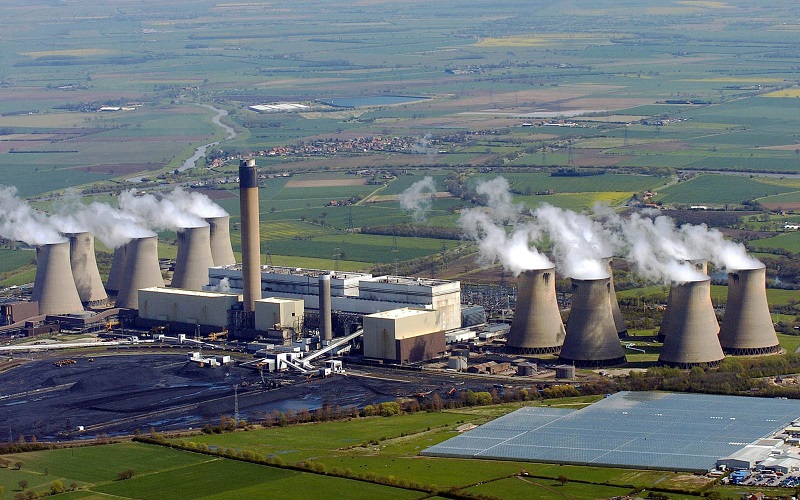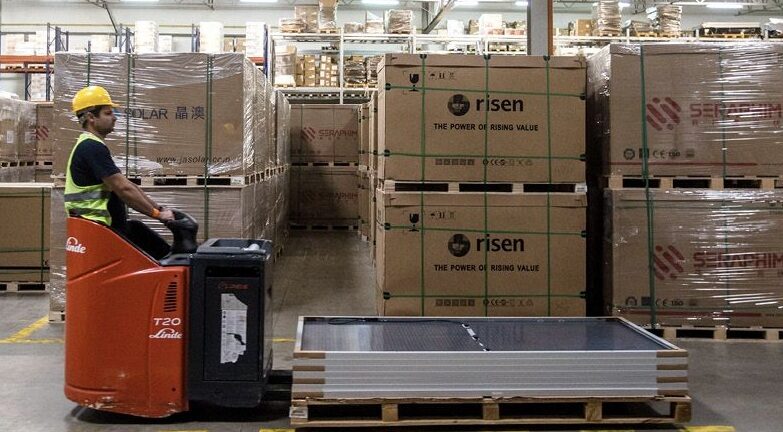From pv magazine 04/2020
The IHS Markit “Multi-tech mitigation case scenario” gives a prediction that at least 30 GW of coal plants will come offline each year through 2030, with an average of 45 GW each year, and a total of 505 GW in the 2020-30 period.
In Spain the installed capacity of coal generation will fall from almost 10 GW in 2019 to less than 1 GW in 2030. In line with this, Spanish utility Endesa (the operator of 13.7 GW of thermal plants in Spain) recently announced that it intends to replace a 1.1 GW coal plant in Andorra with a total of 1.7 GW of solar, wind and storage assets. Of this total, battery energy storage systems (BESS) will comprise 160 MW.
This announcement may appear to be a step change in operational and investment practices, favouring green technology, but this is unlikely to be a like for like replacement. Instead a mix of generation assets (i.e. gas, solar PV and wind) will fill gaps left by coal on a wider basis. Intermittent renewables, even when paired with energy storage, will struggle to provide the reliability and availability of coal generation at a reasonable cost by 2030. However, a key question for the energy storage sector over the next 10 years is what functions the technology can provide as coal is slowly phased out.
Coal traditionally has three key roles: Firstly, as a baseload generation asset, stabilizing electricity grids because it has very high levels of availability. Secondly, it is turned to during winter months when supply must be guaranteed for times of high demand (i.e. in capacity markets). Finally, coal has played a role in stabilizing wholesale and balancing market prices as it has a continuous and steady generation profile.
Each of these functions can be easily and efficiently met by combined cycle gas turbines, at low cost and lower carbon emissions than coal. However, as the climate emergency continues to dominate public discourse, it is prudent to examine how this need could also be met by renewable generation, with the help of energy storage.
Oversizing
Intermittent renewables are inherently unavailable for some of the time. Whilst this can be improved with energy storage, availability remains limited by its state of charge. This is because of state of charge management strategies or prolonged lack of energy generation from the associated renewable asset. With a large enough energy capacity, energy storage can make renewable resources dispatchable. However, the durations of storage required to achieve this (eight-plus hours) and the likely oversizing of the paired renewable energy resource would make this significantly more expensive than the gas power alternative. This makes very long duration storage in co-location unlikely based on short-term technology and cost developments. However, an increasing role is foreseen for co-located storage generally, particularly as renewable penetration levels increase. This is likely to be a leading role for energy storage as coal is decommissioned.
However, for the provision of capacity, energy storage can be a competitive solution. Battery energy storage has recently been successful in capacity markets, notably in the United States, the United Kingdom, and France. Energy storage assets with durations of one to four hours are playing an increasingly important role in meeting peak demand. With increasing penetrations of renewables, the size and importance of these markets – and therefore the opportunity for energy storage – are likely to increase. This will lead to energy storage being a key technology used in times when adequate generation must be guaranteed to ensure security of supply.
As coal is removed, and assuming an increasing percentage of renewable generation to compensate, wholesale energy prices will become more volatile – creating a growing opportunity for storage to participate in wholesale arbitrage and balancing. This is particularly likely in markets which will see high penetrations of solar power in the coming years, as the power generation profile of solar is predictable and does not align well with typical energy demand profiles. Existing projects in Australia and the United Kingdom are successfully pivoting away from solely relying on contracted ancillary service revenues by also trading in day-ahead and intraday markets. In California, wholesale revenue streams are accounting for a growing share of the revenue that storage assets receive.
Technology shift
The combination of energy storage and renewables is able to perform all of the key functions of coal generation. It is capable of balancing wholesale markets, and to some extent ensuring power supply through the provision of peaking capacity. Co-location will also be a major opportunity for storage as renewable penetration grows.
If policymakers prioritize clean generation, there will be clear roles for storage to fill following the decommissioning of 505 GW of coal generation. This would mark a shift for energy storage from a technology class used for a limited number of applications, to a major and important part of the grid technology mix.
The views and opinions expressed in this article are the author’s own, and do not necessarily reflect those held by pv magazine.
This content is protected by copyright and may not be reused. If you want to cooperate with us and would like to reuse some of our content, please contact: editors@pv-magazine.com.



There’s a new flow battery using some kind of iron and carbon (or CO2). Not sure but sounds a lot easier than all those little tiny li-ion batteries, especially at recycle time! The redox technology should blow away having to pay for fossil fuels day after day. And we all know how cheap solar and wind already is…
One storage technology to bear in mind is high temperature thermal storage such as that from Australian company 1414 – which stores heat in liquid silicon at 1414 centigrade. Ideally this could be used at scale at an existing coal fired plant – ideally also providing district heating.
In this setup. A large volume of Silicon is melted in a suitable insulated tank, and used to generate steam powering up the existing steam turbines without combustion.
In a similar idea – Siemens are using volcanic rock to store heat for generation for days.
In my view, these thermal batteries offer real potential in terms of cost, availability on non-exotic materials and longer storage times.
Organic aqueous redox flow batteries are another option for low cost long duration energy storage.
Redox flow technology offers unlimited cycling without capacity fade.
What to do with all those coal fired power plants
High capacity grid scale battery storage needs to go somewhere and former coal plants have two advantages:
(1) They are already contaminated. Once you deploy enough batteries you are guaranteed that there will be some sort of catastrophic failure that spills toxic battery chemicals. It’s just math. Odds are they won’t spill anything that hasn’t already contaminated these sites.
(2) Electrical power lines, equipment and trained personnel. Power storage requires power line connections. Coal plants already have these. They will need high power load balancing equipment to match battery storage power supplied to the millisecond to millisecond demand constraints of the power grid. They already have most of this. They will need people to maintain the high voltage equipment. In most states these tradespeople are highly skilled, highly regulated and will need employment when the power plant shuts down they are skilled employees who already live in the area.
Either way coal plants are shutting down. What we do with these toxic legacies is important. We can insulate local communities from economic shock while transitioning them to a cleaner future power grid if we simply try.
The cheapest way is to apply the technology of Carbon Capture Utilization at these existing coal fired power plants. These power plants could then operate and put into the atmosphere much less CO2 than a natural gas power plant. And because the Sidel CCU System generates saleable products the Utilities expense of installing the System will be reimbursed.
The captured CO2 gets turned into good paying full time jobs and money. It’s good for the economy and the environment.
Hi Sid,
Thanks for your comment, when you say carbon capture utilization is good for the environment, are you saying that its use generates less carbon emission volume than renewable energy combined with the storage assets which could be developed at such sites?